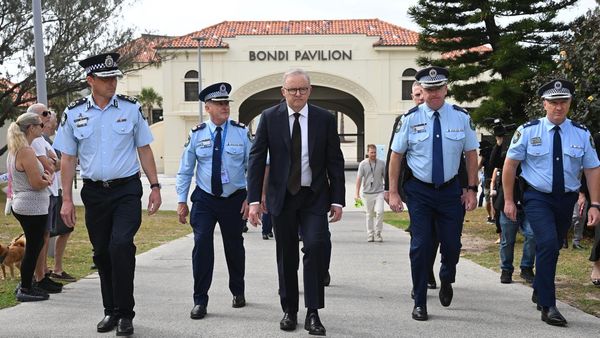
Few professions’ pay have aroused such incredulous ire as train drivers: earning an average of nearly £70,000 a year, going on strike to demand more, and they don’t even have to steer. But if it really is such a cushy number, why doesn’t Britain have enough drivers – and what does it take to join their ranks?
Driver shortages have become a leading cause of disruption on Britain’s railways; about seven out of eight “P-coded” cancellations, made the night before travel, are down to a missing driver.
Parts of the timetable still rely on drivers working voluntary overtime. Also looming is a potential mass exodus, with thousands of drivers recruited in boom years now approaching retirement.
That prompted the government to announce this week that it was changing the rules to allow 18-year-olds to start driving trains – two years younger than the current legal minimum.
But as recent job adverts for Northern Railway show, driving may not be quite the money for old rope that headlines sometimes imply. The training salary of £26,000 rises to £62,000 in three years; but the attributes required include “diligence and moral courage”, “zero tolerance for drugs and alcohol” and “exceptional concentration skills within a low-stimulus environment”, not to mention 3am starts.
Still, the Department for Transport wants at least 5,000 more drivers and hopes that gen Z will help them meet that target. According to the DfT, nearly half of qualified drivers are over the age of 50, while only 3% are under 30.
In the East Midlands Railway (EMR) training centre, at the back of Derby train station, the new recruits are typically later life career changers, including some who work in different roles in the railway.
“We have a lot of ex-police, ex-fire brigade, who tend to like the rules and regulations,” says Mark Letman, EMR’s lead operations training manager and himself ex-army. He oversees 50 to 60 trainees a year, starting with an 18-week intensive theory course on the drivers’ rulebook.
Tim Joyce, 53, is retraining after 30 years in the fire service. Of his new life, he says: “It’s similar in many ways – you have to learn the rules but ultimately be ready to apply them in the real world.”
He shows his copy of the rulebook, known as “the brick” or “the bible”: a hefty tome generously bookmarked with multicoloured labels. “These modules are up to 100 pages each and there are maybe 40 of them,” Joyce says.
Letman picks up the brick and counts through: “Twenty-one.”
Either way, it looks heavy for a driver to have to lug around every day. “He carries it between his ears,” Letman says, tapping his head with a look that suggests this Guardian correspondent will never be a train driver.
The trainees have been through two rounds of interviews as well as psychometric tests – on which the failure rate alone is 60% to 70%. The exam on the rulebook requires a 90% score to pass and driver competency is checked every two years.
Drivers have to live near a depot and travel there and back when other public transport is probably unavailable. That means most are recruited locally – though in EMR’s case that can be London as well as Boston. Anita Bradfield, 60, is in training to work out of St Pancras, having already swapped a career in dancing to work for Network Rail as a mobile operations manager.
“I’d go out to assist drivers and be seeing them every day – I thought it’d be good to have a go!’ she says. “It’s a challenge and good learning. No day is ever the same.”
If the trainees pass the theory exam, they go on to what Letman calls the “traction phase”: learning the nuts and bolts of train driving in class and using a new £1.5m simulator. Only then are they sent to the depot with a mentor and instructors to rack up 200 hours of driving under instruction before being let loose alone with passengers. The whole process takes at least eight months.
Among the EMR trainees, Charlie Potts, at 22, is part of the more elusive demographic the industry is chasing, having decided after a geography and urban planning degree to listen to his old man. “My dad was a train driver – and he always talked it up.”
School leavers without such connections could now be persuaded, Letman says. “The good thing now is we can go into schools and say it could be a career now, for life.”
That could diversify the workforce, the industry hopes. According to Aslef, the train drivers union, the average entry age is 34, which Mick Whelan, the general secretary, says “concerns us massively”. Few women in particular, he says, want to change careers at that point in life.
One of those trying the EMR simulators, though not yet aiming to switch jobs, was the transport secretary, Heidi Alexander. “The driver shortage problem is a genuine problem across the UK,” she said. “Especially in parts of the country, strangely, where we’re trying hardest to improve services, like the north-east.”
The new age rules, Alexander said, were only “part of the puzzle” but could make a big difference. “Giving young people when they’re leaving school or college the ability to go straight into training to be a driver, instead of having to worry what they’re going to do for a couple of years, is really significant.”
The pandemic exacerbated the shortage of drivers: Covid-era regulations halted training and many drivers also sought a better work-life balance. Fewer passengers and lower fare revenue also left the government underwriting train companies, leaving a cash-strapped sector freezing pay.
Strikes ensued and a loss of goodwill persists. Much of the railway relies on rest-day working, or voluntary overtime, and in many places, drivers no longer fancy it. But there is still demand for jobs, Whelan says. “We’ve seen places like Wales recently advertise drivers’ jobs and they’ve been inundated.”
So why can’t we recruit more? “It’s the hurdles,” Whelan says. “It’s an illogical job when you think about it, sitting in a little can, working at 120 miles an hour, relying on the infrastructure below you and pressing a little handle to stop at a point three miles away you can’t see. People keep making out if you drive a bus, drive a car, you can drive a train. You can’t.”
Aslef continues to campaign for what it calls “dignity at work”. While passenger carriages, air-conditioning and seats have been refurbished, drivers have sometimes been left in old cabs. Drivers also have to cope with sparse toilet facilities. In one tragic case in 2022, a driver was killed by another train after, accident investigators believe, stopping in a siding to urinate.
And, Whelan says, “People forget it’s shift work. When you’re walking down a siding at 3.20am in the rain to get a train ready and it’s freezing cold, it’s not quite as pretty as when you’re rolling into a station in the sunlight.”







